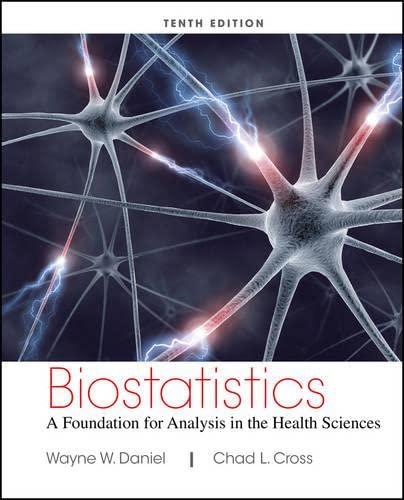In a study conducted by Byers et al. (A-2), researchers tested a Poisson model for the distribution
Question:
In a study conducted by Byers et al. (A-2), researchers tested a Poisson model for the distribution of activities of daily living (ADL) scores after a 7-month prehabilitation program designed to prevent functional decline among physically frail, community-living older persons. ADL measured the ability of individuals to perform essential tasks, including walking inside the house, bathing, upper and lower body dressing, transferring from a chair, toileting, feeding, and grooming. The scoring method used in this study assigned a value of 0 for no (personal) help and no difficulty, 1 for difficulty but no help, and 2 for help regardless of difficulty. Scores were summed to produce an overall score ranging from 0 to 16 (for eight tasks). There were 181 subjects who completed the study. Suppose we use the authors’ scoring method to assess the status of another group of 181 subjects relative to their activities of daily living. Let us assume that the following results were obtained.
X Observed Frequency X Expected Frequency X Observed Frequency X Expected Frequency 0 74 11.01 7 4 2.95 1 27 30.82 8 3 1.03 2 14 43.15 9 2 0.32 3 14 40.27 10 3 0.09 4 11 28.19 11 4 0.02 5 7 15.79 12 or more 13 0.01 6 5 7.37 Source: Hypothetical data based on procedure reported by Amy L. Byers, Heather Allore, Thomas M. Gill, and Peter N. Peduzzi, “Application of Negative Binomial Modeling for Discrete Outcomes: A Case Study in Aging Research,” Journal of Clinical Epidemiology, 56
(2003), 559–564.
Test the null hypothesis that these data were drawn from a Poisson distribution with l ¼ 2:8. Let a ¼ .01.
Step by Step Answer:

Biostatistics A Foundation For Analysis In The Health Sciences
ISBN: 9781118302798
10th Edition
Authors: Wayne W. Daniel, Chad L. Cross






